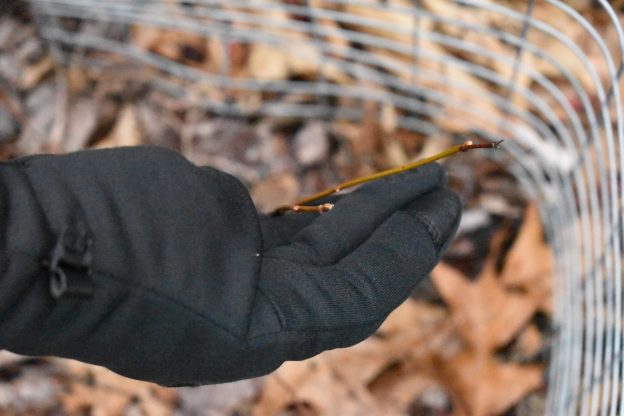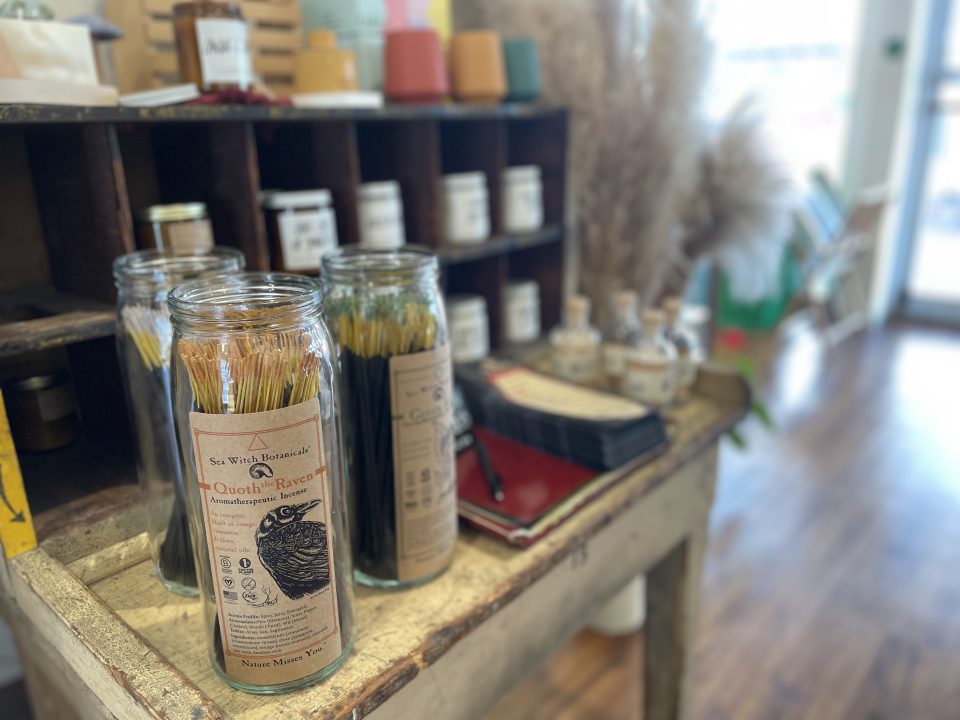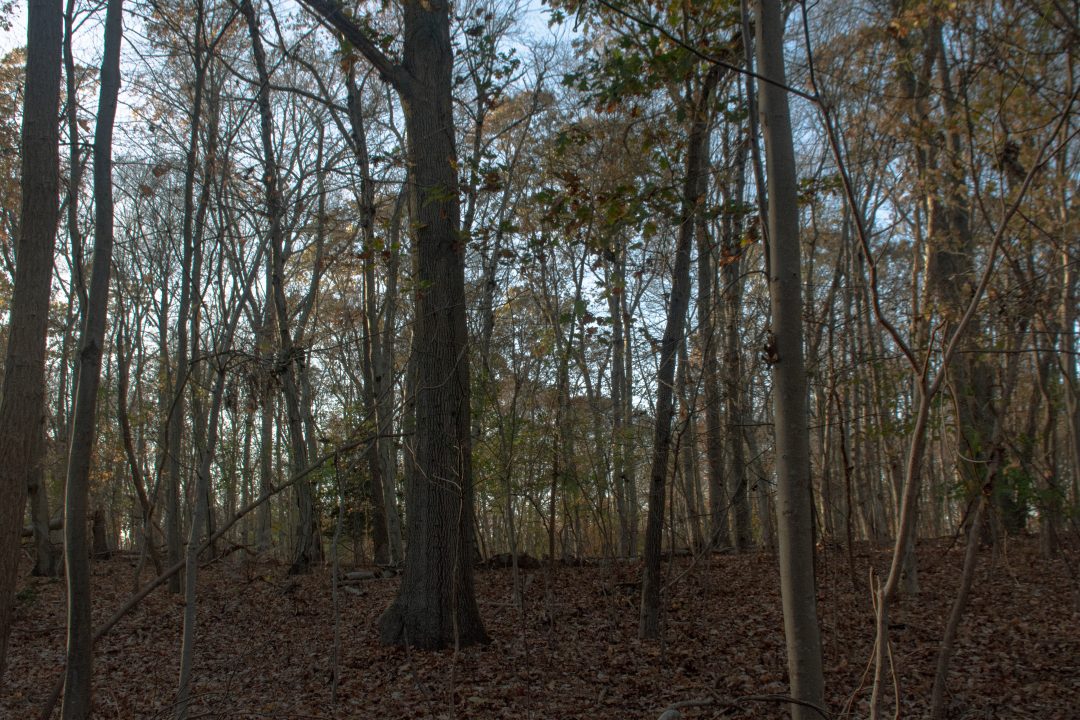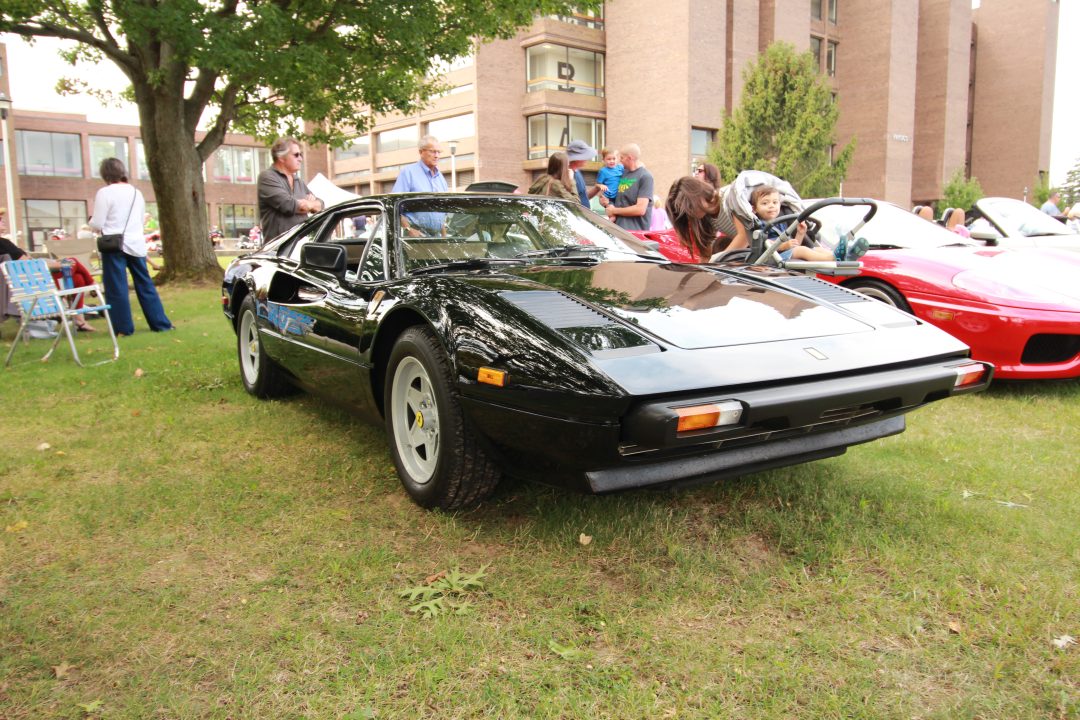
“A tree came down, look at that.” Sue Avery, a botanist and certified landscaper, examines a thin wire cage along the border of the Ashley Schiff Preserve on campus.
A slender sapling grows in the center, hardly visible against a backdrop of leaves and debris. It’s barely mid-April — too early for the shoot to have grown leaves. A fallen tree rests barely a foot away; a few inches closer, and it might have crushed the sapling.
Avery isn’t sure about the exact origin of the sapling. “It came from a batch of fertilized nuts collected from blight-resistant trees or from results of cross-pollination between flowering trees on Long Island,” she said. A fungus, also known as chestnut blight, wiped out mature American chestnut trees in the 1950s.
It’s one of two that have been planted in the Ashley Schiff Preserve. The other is a hybrid, a mix of Chinese and American chestnut trees from the American Chestnut Foundation, an organization dedicated to reviving the American chestnut tree.
Friends of the Ashley Schiff Preserve, an organization that protects and manages the forest where Avery is secretary, hopes one of these two saplings will eventually flower and grow chestnuts.
Once a dominant presence in America’s eastern woodlands, mature American chestnut trees went functionally extinct in the 1950s after an invasive fungus from Asia began to rampage through forests in the early 20th century. Towering at heights ranging up to 100 feet, with trunk diameters often spanning more than 10 feet, billions of these trees once spanned from Maine to Alabama.
“The devastation of the American chestnut by the chestnut blight represents one of the greatest recorded changes in natural plant population caused by an introduced organism,” William MacDonald, a researcher and faculty member at West Virginia University, wrote more than 30 years ago.
Today, the species is mostly reduced to offshoots that grow from the surviving root systems of decimated trees, or “stump-sprouts.” A 2006 Stony Brook study counted close to 160 groups of “stump-sprout” offshoots on campus, according to Geosciences Professor Gilbert Hanson.
“Anywhere where there’s forest that’s preserved, there’ll be chestnuts in it; you just have to look for it,” Hanson, who oversaw the student-led study, said.
Few survive for longer than a few years, though — the blight kills them too. The fungus can survive on other hosts, such as oak trees, which it doesn’t kill.
Groups like the American Chestnut Foundation have been experimenting for decades to develop a blight-resistant American chestnut tree and restore the species to its former glory in American forests.
Nikolaos Nantsis from the American Chestnut Foundation’s Long Island chapter said the tree was integral to American ecosystems and economy. Forest wildlife, such as white-tailed deers and black bears, relied on nuts from the trees. The trees were especially important to the lumber industry, as a particularly rot-resistant wood, and farmers made a living on harvesting their nuts.
“It’s America’s native chestnut tree,” he said. “These trees, in a way, helped build America. They shaped the landscape. It’s our moral obligation to help revive the species that we unfortunately damaged.”
Researchers at the State University of New York (SUNY) College of Environmental Science and Forestry (ESF), for instance, have developed a blight-resistant American chestnut called Darling 58. They are currently working with regulatory agencies for approval to distribute the plant.
Darling 58 is coded with a “single gene insert” of oxalate oxidase from wheat, according to Dakota Matthews, the American Chestnut Project’s molecular lab manager at ESF. This gene codes for a protein that converts oxalic acid into hydrogen peroxide and carbon dioxide, both byproducts that benefit the tree.
Oxalic acid is a substance secreted by the blight that kills off tree tissue. Fungal pathogens from the blight eat the tree tissue killed by oxalic acid, creating cankers around tree trunks that effectively kill the plant upwards from that point.
“With the development of that and other possible resistance genes, we began isolating American chestnut embryos from immature chestnuts, learning how to propagate them from little baby embryos, inducing shoots, and then all the way up into a full tree,” Matthews explained.
SUNY ESF is still in the process of applying for federal regulatory approval. Research results to date have indicated “there are no significant ecological effects of inserting” the gene, besides “enhancing blight tolerance,” according to the American Chestnut Foundation website. The website also indicates there are no negative human health consequences to inserting the gene, which is non-allergenic and naturally present in many food crops.
“Once we finish doing that, as long as everything’s okay … we’ll be able to distribute these trees and plant them out and repopulate the American chestnut,” Matthews said.
The Ashley Schiff Preserve doesn’t have a Darling 58 chestnut tree. Avery thinks the preserve would be a good place to plant one, but she’s not the only person who would need to approve a request for one.
“We’ll have to see how the plants we introduced will work out,” she said.
Nantsis has no doubts that Darling 58 trees will help restore the American chestnut tree.
The added gene will enable American chestnut trees to “not only be able to survive but thrive and do what they used to do,” he said.
Nantsis said if Darling 58 trees are approved, the Long Island chapter of the American Chestnut Foundation plans to plant as many in forests as possible “to make sure we not only get the species back to where it used to be, but outcross these species with mother trees in the wild.”
















